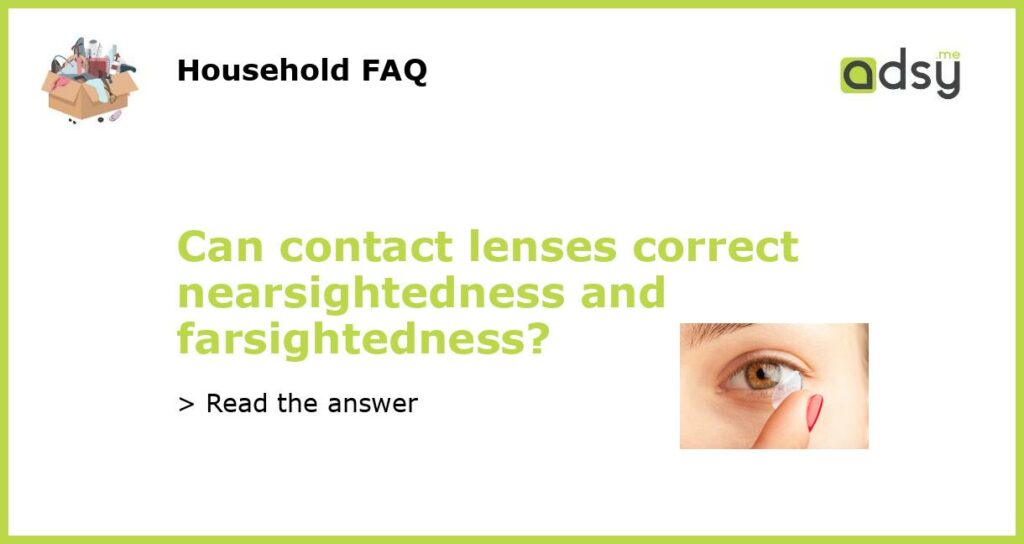What are Contact Lenses?
Contact lenses are small, thin lenses that are placed directly on the surface of the eye to correct vision problems. They are typically made of a soft, flexible material that allows for comfortable wear. Contact lenses are an alternative to eyeglasses and provide a more natural appearance since they sit on the eye rather than in front of it. There are different types of contact lenses available, including those specifically designed to correct nearsightedness and farsightedness.
Can Contact Lenses Correct Nearsightedness?
Yes, contact lenses can correct nearsightedness, also known as myopia. Nearsightedness is a common vision problem where distant objects appear blurry while nearby objects can be seen clearly. Contact lenses used to correct nearsightedness have a prescription that includes a negative number, which indicates the degree of nearsightedness. When these lenses are worn, they help focus light directly on the retina, allowing for clearer vision at a distance.
Can Contact Lenses Correct Farsightedness?
Yes, contact lenses can also correct farsightedness, also known as hyperopia. Farsightedness is a vision condition where nearby objects appear blurry while distant objects can be seen clearly. Contact lenses used to correct farsightedness have a prescription that includes a positive number, which indicates the degree of farsightedness. When these lenses are worn, they help focus light directly on the retina, allowing for clearer vision at both near and far distances.
What Types of Contact Lenses Are Available for Nearsightedness and Farsightedness?
There are several types of contact lenses available for correcting both nearsightedness and farsightedness. These include soft contact lenses, rigid gas permeable (RGP) lenses, and toric lenses.
Soft contact lenses are the most popular choice for correcting nearsightedness and farsightedness. They are made from a soft, flexible material that conforms to the shape of the eye, providing comfortable wear. Soft lenses are available in different designs, including daily disposable, monthly disposable, and extended wear options.
RGP lenses, also known as rigid gas permeable or hard lenses, are another option for correcting nearsightedness and farsightedness. These lenses are made from a rigid material that allows oxygen to pass through, keeping the eyes healthy. RGP lenses are known for providing crisp vision, but they may require an adjustment period for wearers to adapt to their rigidity.
Toric lenses are specially designed for individuals with astigmatism, which is a vision condition that causes distorted or blurred vision at all distances. These lenses correct both astigmatism and nearsightedness or farsightedness, allowing for clear vision. Toric lenses are available in both soft and RGP materials depending on the individual’s needs and preferences.
Contact lenses are a versatile option for correcting vision problems, including both nearsightedness and farsightedness. With various types and designs available, individuals can choose the lenses that best suit their needs and preferences. Consultation with an eye care professional is essential to determine the most suitable contact lenses and prescription for correcting specific vision conditions.






